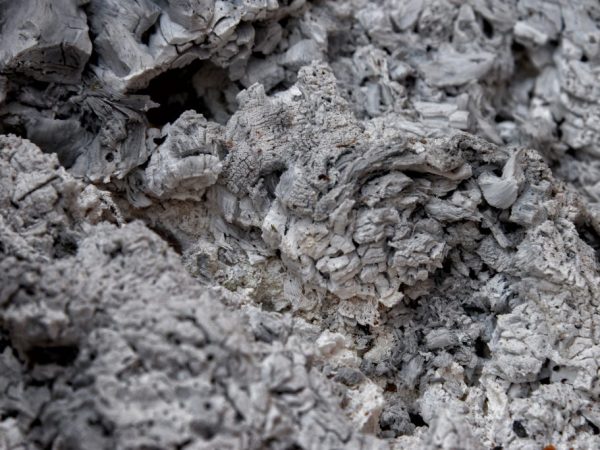Feeding pepper seedlings with ash
Feeding pepper seedlings with ash is a very effective procedure that helps to obtain a generous and healthy harvest. Consider how to properly feed and what is its benefit.

Feeding pepper seedlings with ash
Ash composition and its effect
Ash is one of the most affordable fertilizers. These are residues from the combustion of various types of organic matter.
100 g of non-combustible residue contains sources:
- potassium (12-13%);
- calcium (15-17%);
- sodium (5-8%)
- magnesium (about 4%);
- phosphorus (up to 7%);
- other useful micronutrients.
The percentage of all trace elements is different. Depends on what kind of plant was burned.
The main purpose of ash is to accelerate plant growth and development. Increases the immunity of seedlings, which prevents the appearance of various diseases, increases productivity.
It is categorically impossible to use organic residues that contain impurities of plastic, garbage, because they contain a lot of harmful chemicals.
Gardeners love to carry out such feeding, since there is no chlorine in the ash.
Features of feeding pepper seedlings with ash
Feeding pepper seedlings with ash is an important care procedure. It is not recommended to feed the vegetable crop with this organic fertilizer in parallel with nitrogen. Nitrogen-containing are ammonium sulfate, urea, fresh manure, ammonium nitrate. An organic fertilizer neutralizes the effects of nitrogen, which can negatively affect the growth of pepper bushes. Nitrogen fertilizers are allowed to be applied only a month after feeding with a non-combustible residue.
Processing methods
Consider in what ways you can feed the pepper seedlings with ash:
- sprinkling with a dry mixture of holes for planting on all sides of the plant or between the rows;
- watering the pepper seedling with a liquid solution;
- foliar feeding of vegetable crops with organic fertilizer.
Feeding the pepper plant with ash is advised to start by soaking the seeds. You need to take 1 teaspoon of ash. Mix it with 1 liter of water. You can even use rainwater. Leave the solution to infuse for a day. The seeds must be soaked for 5-7 hours and then planted in the prepared holes. This promotes rapid germination of the grains, providing resistance to pests.
Ash root dressing

Fertilizers are very important
Root feeding is a method of introducing fertilizers under the root, due to which all useful trace elements will be absorbed directly by the root system. This top dressing is done after sowing pepper seeds. This procedure ensures the intensive growth of the plant during the period of active life of the seedlings.
Root top dressing cannot replace the main pre-sowing top dressing. It becomes more effective only if the main pre-sowing and other top dressing is introduced in the missing amount. Then the ash fertilizer will replenish the balance of useful microelements.
How to prepare an ash solution
Before preparing a solution from ash, you need to make sure that there are no unnecessary particles in the non-combustible residue, such as plastic, polyethylene, nails, rubber.
Sequencing:
- Approximately 200-300 g of ash is taken. First, it must be sifted and then poured with boiling water so that the water completely covers the organic residues.
- You should take a sieve or cheesecloth, and gently strain the broth into another container.
- Pour the mixture with 10-15 liters of water.
- Add 50-60 grams of soap for better adhesion.
The soil is not very fond of exceeding the applied fertilizers. There are proportions that must be observed when introducing top dressing for planting peppers per 1 m². For loose soil, 150 to 250 g of ash are applied per 1 m². If the soil contains a lot of sand and clay, the dose is increased by 3-5 times.
The proportions depend on the amount of clay in the soil. The more it is, the more fireproof residue is needed.
Dosage
- 1 teaspoon contains 2 g of dry mixture;
- 1 tbsp. the spoon contains 6 g of non-combustible organic residue;
- 1 glass with a volume of 200 g holds 100 g of podzhiv;
- a glass jar with a volume of 0.5 l contains up to 250 g of the mixture, 1 l - up to 500 g.
One bucket of ash solution is enough for 1-2 m2 of beds. Remember, this remedy can be used prophylactically against aphids, caterpillars and other pests.
Ash handling recommendations
Ash feed should not be mixed with fertilizers that contain phosphorus. This can lead to retrogradation of pepper seedlings, that is, to a decrease in the absorption of phosphorus compounds.
Protect your mouth, nose, eyes and hands when handling fertilizer.
Other recommendations:
- It is necessary to store ash in a dry, cool place. Moisture has a destructive effect and can take up nutrients and components.
- Remember that non-combustible residue is caustic fertilizer. After that it is introduced, the top dressing place should be sprinkled with a small amount of earth.
- Excessive ash content in the soil can cause great damage to the plant.
Pest control with ash
Ash helps eliminate fungal infections. It is also effective in pest control.
The most popular uses are dusting and spraying. Dusting helps repel slugs and snails and eliminate aphids. Necessary to protect pepper from powdery mildew or gray mold.
For dusting, you need a regular ash solution. The best time to apply is early in the morning (before 9:00). You can spray the leaves with warm water in advance.
Spraying is another effective method. It is carried out by the drip irrigation method. A traditional ash solution will do. The number of treatments per month is 2-3. It will help in the fight against fusarium, cladosporium, black spot, stolbur.

